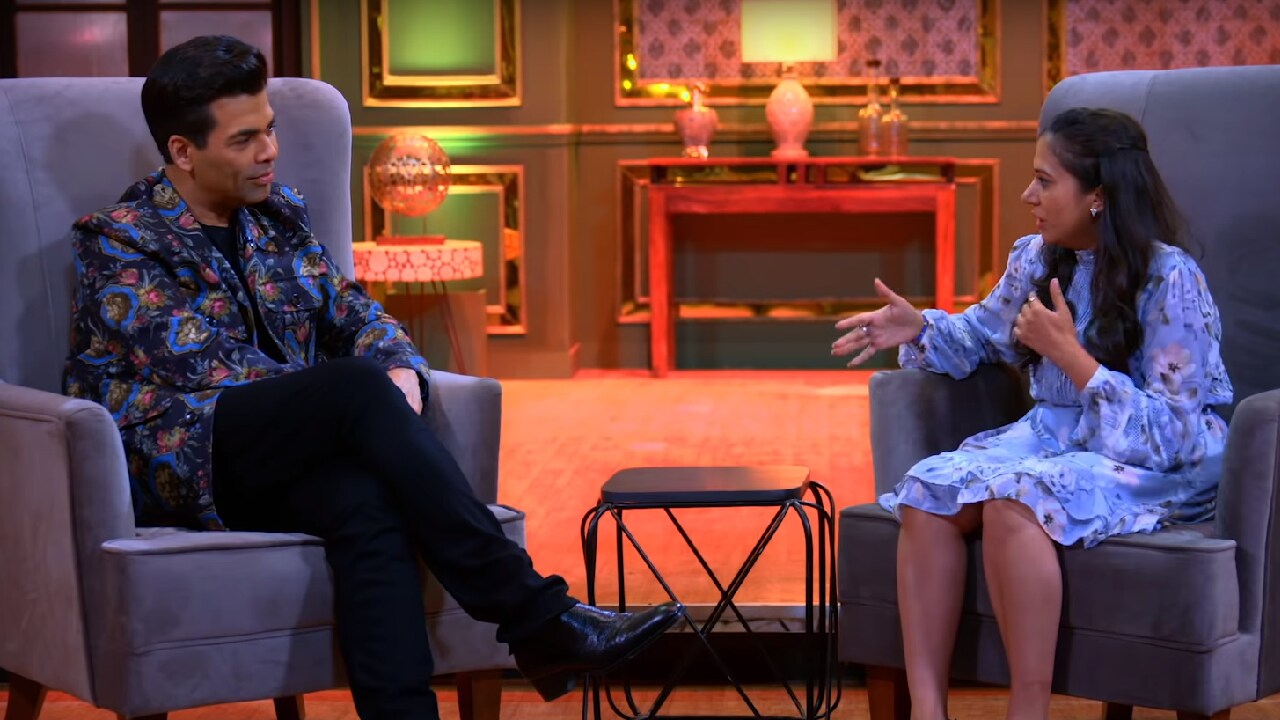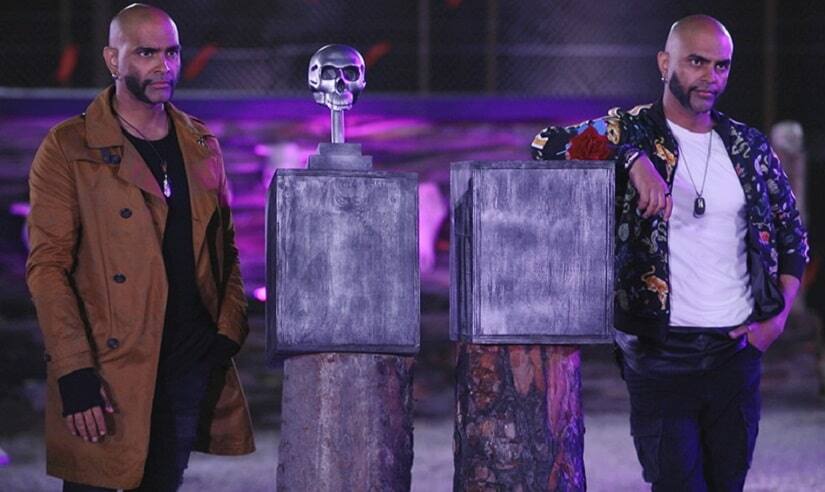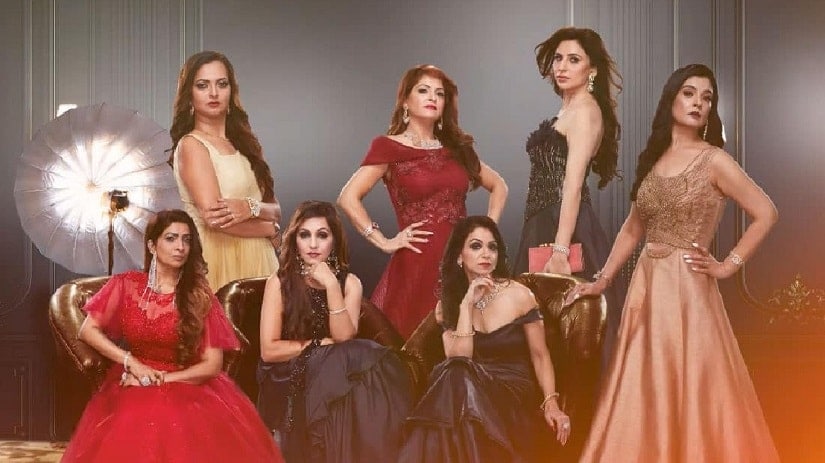Picture this: Karan Johar, one of Hindi cinema’s most influential filmmakers, and arguably the country’s most “sellable” brand, decides to take a personal interest in your love life (or the lack of it), broadcasting your dates and your insecurities to a global audience. In 2020, this scenario is both reality and a reality show. In the Netflix-commissioned What the Love! – an unseemly Queer Eye-redux – Johar plays a dating guru, life-coach and gossip girl (in the show’s opening episode, he looks down on people for their dressing sense in a way that has Mean Girls written all over it) for six millennials. The results are far from satisfactory. Every episode has the filmmaker call in his coterie of famous friends, who include A-list celebrities (Saif Ali Khan, Arjun Rampal), and a fashion designer and hair stylist to aid in a kind of personality makeover. Once their unreliable therapy sessions, which also include a mock prep date, are underway, Johar sets them up with strangers. Most of these dates account for a depressing standard of romance – adopting cats seem like a better outcome than going on a date with a stranger who makes a creepy move at you when you’re trapped inside a hot air balloon with him. But someone else’s misfortune does make for gripping TV, especially if it is streaming on a Netflix account near you. [caption id=“attachment_7935501” align=“alignnone” width=“825”]  A still from What the Love!. YouTube[/caption] On the other end of the spectrum is Skulls and Roses, another Indian dating reality show that proudly wears its idiocy on its sleeve and believes that competing in questionable tasks is a sure shot way of falling in love. Yet, against all logic, since the first season – comprising ten hour-long episodes – dropped on Prime Video last August, Skulls and Roses has swiftly turned into both a laughing stock as well as an undeniable guilty pleasure. In the fourth episode of Skulls and Roses, titled “Moans and Screams,” sixteen strangers – eight girls, eight boys, marooned on a South African island in various stages of undress, are made to pair up and moan suggestively as part of a task. They’re led to a setup away from prying eyes, rigged with a set of mics and two couches that face each other – contestants make aggressive eye-contact, some even hold hands or close eyes, and almost on cue, start playacting an orgasm as if sex is a public competition that hinges on maximum sound capacity. There are unwarranted screams, ample giggling, some questionable noises, and not even an iota of intimacy. It’s a setting that is tailor-made for evoking second-hand embarrassment and yet you’d be hard pressed to peel your eyes away from the screen – it’s also deeply watchable. The charm of shows like What the Love! and Skulls and Roses, hosted by Raghu and Rajiv Laxman – the errant siblings who’ve long monetised the act of publicly yelling at vulnerable buffoons – lies in them being easy conversation-starters on the internet. A quick trawl through Indian Twitter will throw up innumerable threads, accompanied by screenshots from episodes, that reiterate the same thing: wide-eyed surprise tinged with horror, at the commitment of the participants to abject dumbfoolery. [caption id=“attachment_8145361” align=“alignnone” width=“825”]  A still from Skulls and Roses. Amazon Prime Image.[/caption] The implication is clear. In the era of peak TV, where purveyors of good taste keep setting elusive standards for critical validation, how do reality shows manage to attain cultural capital without paying heed to any of it? Yet, come to think of it, it’s this precise willingness to be a subject of mockery that guarantees the unprecedented popularity of both What the Love! and Skulls and Roses. If the machinations of the internet have proved anything, it’s that it is much easier to come to a consensus about disliking something than it is to agree on anything. In fact, the internet has also turned disliking something into a legitimate response. So today, you don’t steer clear from something that might not be your cup of tea. Instead you seek it out and willingly consume it until your disdain serves a purpose, either as a respite from the burdens of life, or till it fulfils the itch for an acceptable mode of voyeurism. Disliking something now fuels a gathering on the internet, becoming a window to shows that somehow possess the power to unite people who would otherwise differ on what their favourite Anurag Kashyap film is. Indian show creators are merely catching up. “At this point, hate-watching a show is the easiest way to evoke the feeling of watching TV in your living room couch with a group of people,” says 27-year-old Arjun Banerjee, a Mumbai-based lawyer who by his own admission took to ranting about What the Love! on Reddit, but only after he had binge-watched the entire season. On the internet, Banerjee’s views were echoed by numerous people – a feat that feels distinctive to shows that market themselves as guilty pleasures. After all, there’s only one appropriate reaction to guilty pleasures. You find yourself unable to stop talking about how bad it is and by extension, confess to being unable to stop watching it. By all means, this is a recent phenomenon. Until five years ago – a period when Indian guilty pleasures were confined to television, starting off as fillers for weekend programming slots – the idea of a show going out of its way to be cringe-worthy used to be an exception. Sometimes, it was unintentional, like in the case of low-budget Hindi comedies whose makers genuinely underestimated their delusion. And, at other times, even when a show was designed to titillate, like MTV’s Roadies or UTV’s Emotional Atychaar, they occupied a niche, targeted to a specific set of audiences who existed in isolation within the majority of the TV-watching audience. [caption id=“attachment_5648951” align=“alignnone” width=“825”]  A still from Four More Shots Please![/caption] Today, an Indian guilty pleasure is a mainstream genre unto itself, aided in part by the advent of streaming platforms that have taken to catering to ridiculousness with diligence. Even the definition of what constitutes a guilty pleasure is no longer restricted to hormonal fests disguised as reality shows. They spill-over onto fictional shows as well. Take for example, Four More Shots, an on-the-nose chick-flick comedy, visibly modelled on Sex and the City, that I personally found impossible to stop watching, despite its occasional screechiness and frequent aversion to logic. On the condition of anonymity, a production assistant who worked on the show’s first season, points out that Skulls and Roses, Four More Shots, or even Alt Balaji’s entire catalogue finds takers because the markers of feedback for shows housed on the Indian internet has considerably changed. “Earlier, reviews were the sole benchmark for dictating not just the quality of a show but also its discoverability. Today, the easiest way for anyone to stumble upon a show is if someone on their timeline is talking about it. It’s more likely that a show that would elicit extreme reactions would attract attention spans.” A show being “so bad that it is good” is no longer an insult. Instead, it’s a confirmation of attention spans. This never-ending cycle of commissioning something because audiences take to it being enjoyably incompetent, overrides personal taste to serve collective pleasure. The multiplying takers for Inside Edge, a melodramatic rendition of the scandals in the world of Indian cricket or Dilli Darlings, a show that revolves around wealthy middle-aged homemakers fighting it out at kitty parties, are proof that sometimes, delivering a binge-worthy series has very little to do with adherence to quality or commitment to big budgets. Over the last two years, the rise in the amount of shows that have embraced this very fact as their motto has furthered solidified this genre as a mainstay of Indian TV programming, no longer relegated to a supporting act. [caption id=“attachment_7302571” align=“alignnone” width=“825”]  A still from Dilli Darlings. YouTube[/caption] It wouldn’t be inaccurate to assume that the unanimous acceptance of a guilty pleasure also stems from how entwined they are with our cultural preoccupations. These shows often tread on familiar lines like sex, infidelity, dating, female feistiness, public pettiness and occasionally, public humiliation (the latter is a facet that defines the continuing cachet of Bigg Boss) that more often than not instantly evoke collective curiosity. As a culture, we’re known to lend ourselves toward a certain degree of voyeurism, whether it involves being nosy about the lives of others or drawing personal pleasure from the downfall of others. The demand for an Indian guilty pleasure then, says as much about the people watching them as the ones green-lighting them. In a way, the dawn of the Indian guilty pleasure feels a lot like an extension of gossip sessions, allowing viewers to vicariously have an opinion on the bad decisions of strangers without any accountability. It’s akin to the adrenaline rush that you derive on a roller-coaster – except you no longer need to volunteer as a guinea pig. The Indian internet is ready to provide you countless ones.
The dawn of the Indian guilty pleasure feels a lot like an extension of gossip sessions, allowing viewers to vicariously have an opinion on the bad decisions of strangers without any accountability
Advertisement
End of Article


)
)
)
)
)
)
)
)
)



